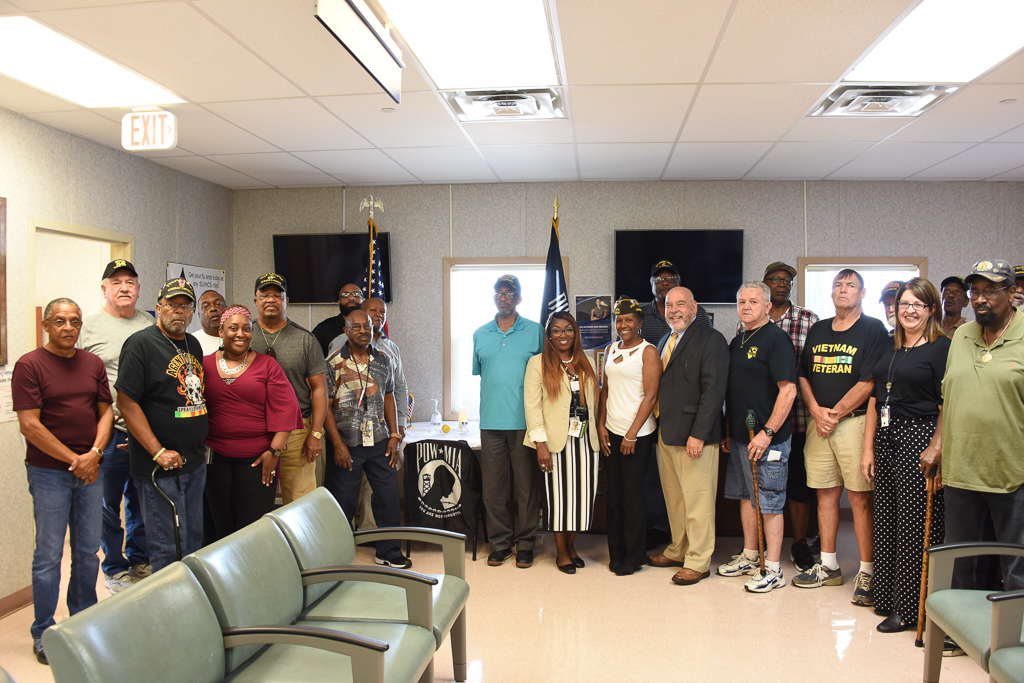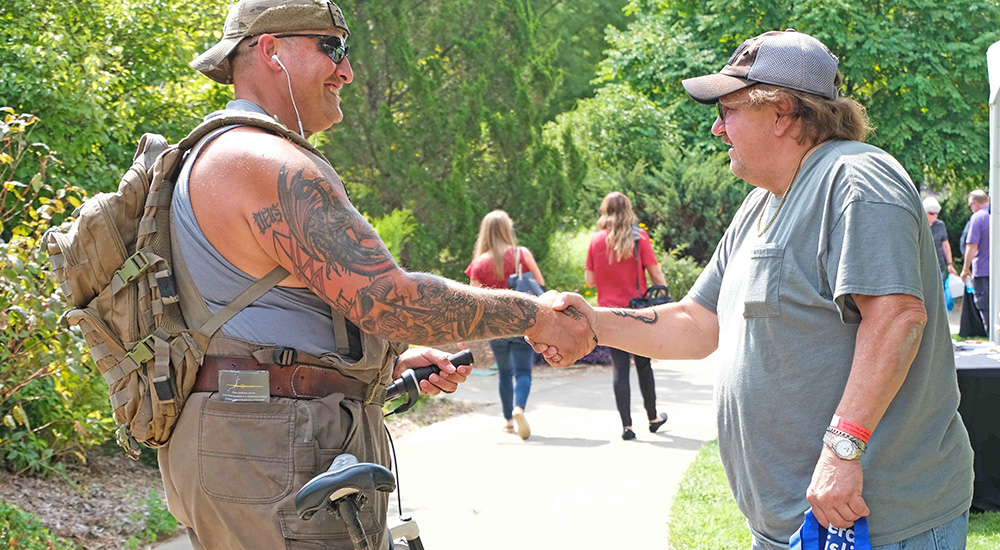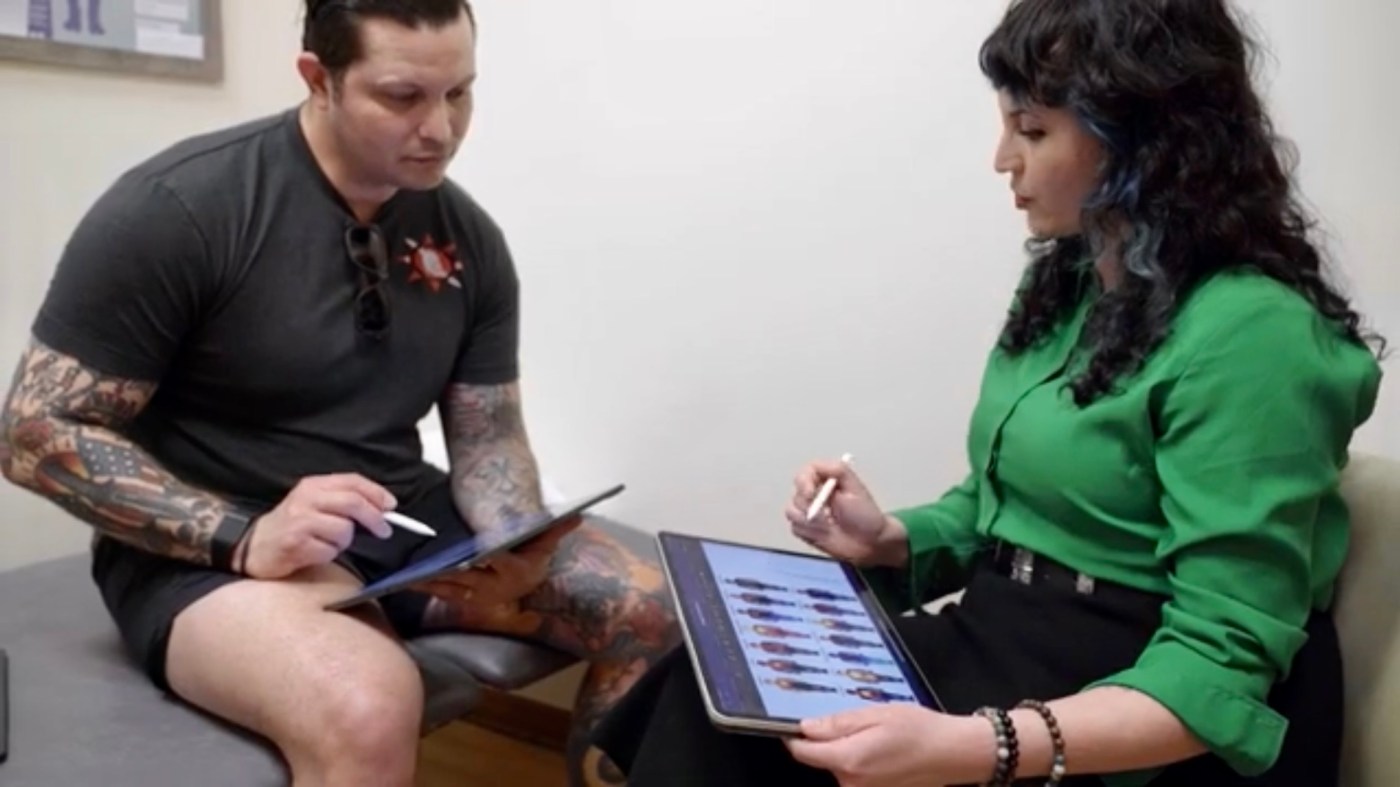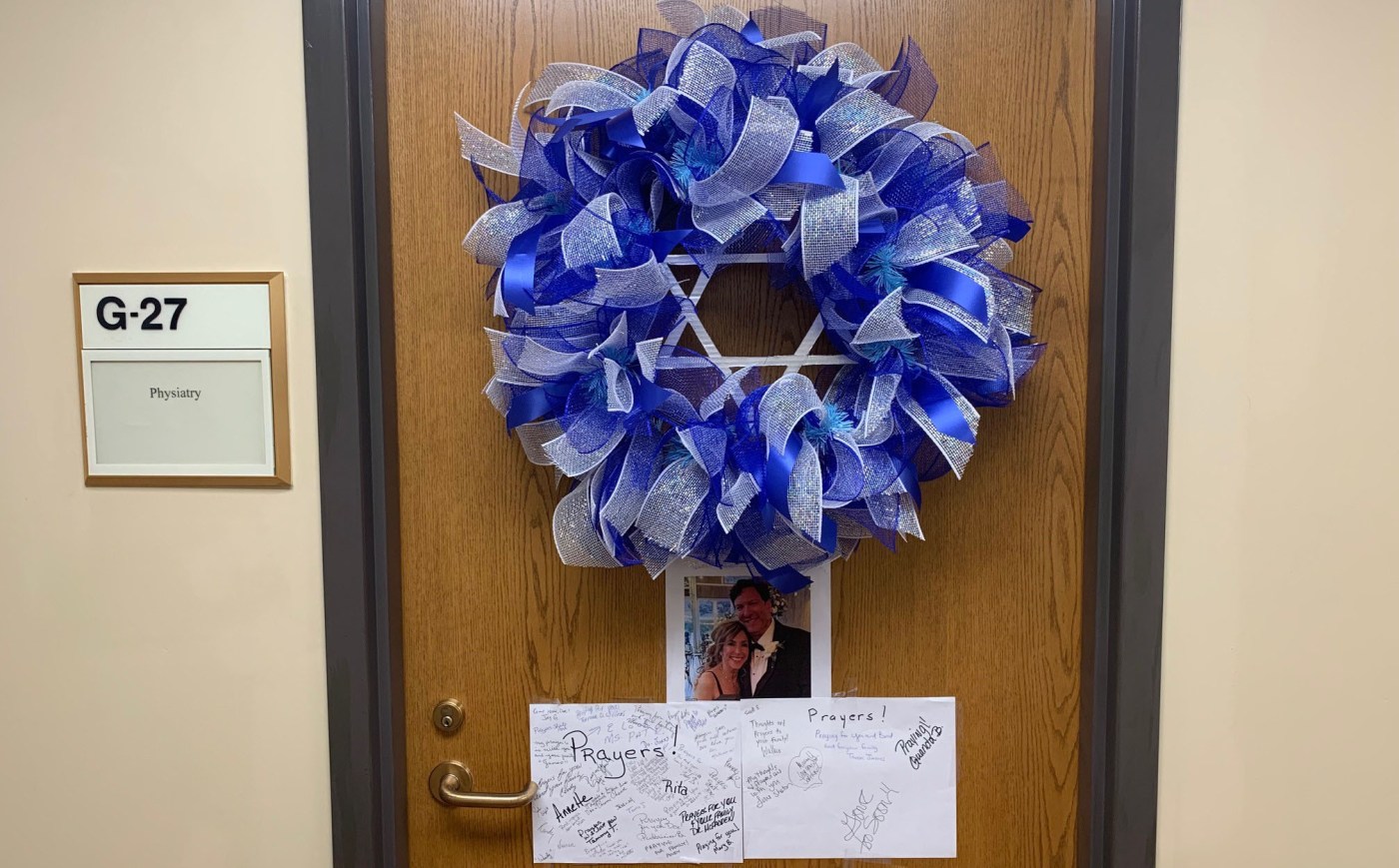On July 11, our country’s Prisoner of War/Missing in Action (POW/MIA) service members were remembered and honored at the St. John VA community-based outpatient clinic, part of the Southeast Louisiana Veterans Health Care System. The St. John clinic received a donation of a POW/MIA memorial table from Veterans of Foreign Wars (VFW) District 2 and Post 3337.
The POW/MIA memorial table is a tribute to prisoners of war and those service members who have fallen in combat or gone missing. The table is small and set for one, symbolizing the isolation of the absent service member. Items set on the table serve as symbols for the bitter fate of the service member, tears shed by the member’s family, hope the country has that the member will return home, and more. The “fallen comrade” or “missing man” table can be used in a solemn ceremony on special occasions like National POW/MIA Recognition Day, recognized annually on the third Friday in September.

VFW Post 3337 Commander and Army Veteran Jamaine “Jamie” Smith made the donation of the POW/MIA table to the St. John clinic on behalf of the district and her post. Smith was recently elected commander of post 3337 in La Place and is the first woman to serve in that role.
VFW Post 3337 Commander and Army Veteran Jamaine “Jamie” Smith made the donation of the POW/MIA table to the St. John clinic on behalf of the district and her post. Smith was recently elected commander of post 3337 in La Place and is the first woman to serve in that role.
“We have to make sure the POW/MIA service members are never forgotten,” Smith said. “When Veterans bring their family into the clinic, they will see the table and ask about it. It will always bring Veterans’ attention to it and help them to show honor and not forget.”
Army Veteran Ray Bass is a past post commander of 3337 and the post’s current quartermaster. He is also a medical support assistant at the St. John clinic. He explained how the idea for the donation came about.
“I noticed we (St. John Clinic) didn’t have one. Eventually we’d like to get all the clinics a table,” Bass said. “When patients read the brochure that tells you what each thing on the table means, they get a better idea of what the POW/MIA table is about. I think the table will be something the Veterans will really enjoy, but the family members might enjoy it even more than the Veterans, because many of them have probably never seen a POW/MIA ceremony.”
Dr. Michelle Carroll is a psychologist at the St. John clinic and was present for the table donation. Her grandfather served in the Army Air Corps a member of the 576th Bomb Squadron during WWII. When his plane went down in Germany, he was captured and held as a POW. Carroll still has a copy of the telegram that was sent to her grandmother when her grandfather first went MIA.
“Although all Veterans sacrificed, this POW/MIA table is a reminder of the brave sacrifices made by Veterans who were Missing in Action or Prisoners of War,” Carroll said. “This hit very close to home because my grandfather was captured during WWII. He was held at Stalag Luft 3 and then at Stalag 7 until the camp was liberated at the end of the war. My grandfather never spoke of what he experienced as a POW, but my grandmother recalled his nightmares. Now as a psychologist, my hope is that I’m helping Veterans like my grandfather and that, somehow, he knows it.”
Marine Veteran A. Wade Moore was also present for the donation. Moore has two Purple Hearts from his service in Vietnam, is a member of Post 3337 and a patient of the St. John clinic. He said this POW/MIA table is very meaningful to him.
“Some of the ones I fought along with never made it home. After I went home, about six weeks later, they told me my whole company got wiped out,” Moore said. He thinks of his fellow Marines often and actively searches for fellow service members he may have met in the hospital at Cam Ranh Bay before being medically discharged and sent home.
Moore went on, “Other people are not going to see the same thing that I see, especially a non-Vet. A Vet will understand, but a non-Vet? We’ve got to teach them.”
SLVHCS Medical Center Director Fernando Rivera agreed with Moore on the responsibility we all share for teaching those who don’t know about POW/MIA service members.
“We must never forget the men and women who gave up their freedom to protect ours,” Rivera said. “If we put the table there, then people ask questions. I enjoy it when I hear young ones ask their parents or grandparents, ‘Hey, what’s that all about?’ and the Veteran gets to share his or her knowledge and experience with the child.”
“It’s an honor for us to receive such a prestigious donation in commemoration of those who served,” said St. John Clinic Manager and Army Veteran Tesa Nevers. “We will never forget the sacrifice of our brothers and sisters. We thank VFW Post 3337 and District 2.”
Smith made the perfect closing point about the table when she said, “This table will help ensure we always remember our POW/MIA servicemembers. The main thing is to never, ever forget.”
Jamie Mobley is a public affairs specialist with VA.
Topics in this story
More Stories
Health summit gave Veterans opportunities to visit with VA staff and meet community organizations that provide services to Veterans.
STAR is a rehabilitation program for Special Operations Forces service members and Veterans. It facilitates recovery, function, reintegration, and transition.
Dr. Cohen left his mark on the specialty care clinic staff and on the Tuscaloosa VA Medical Center as a whole.






